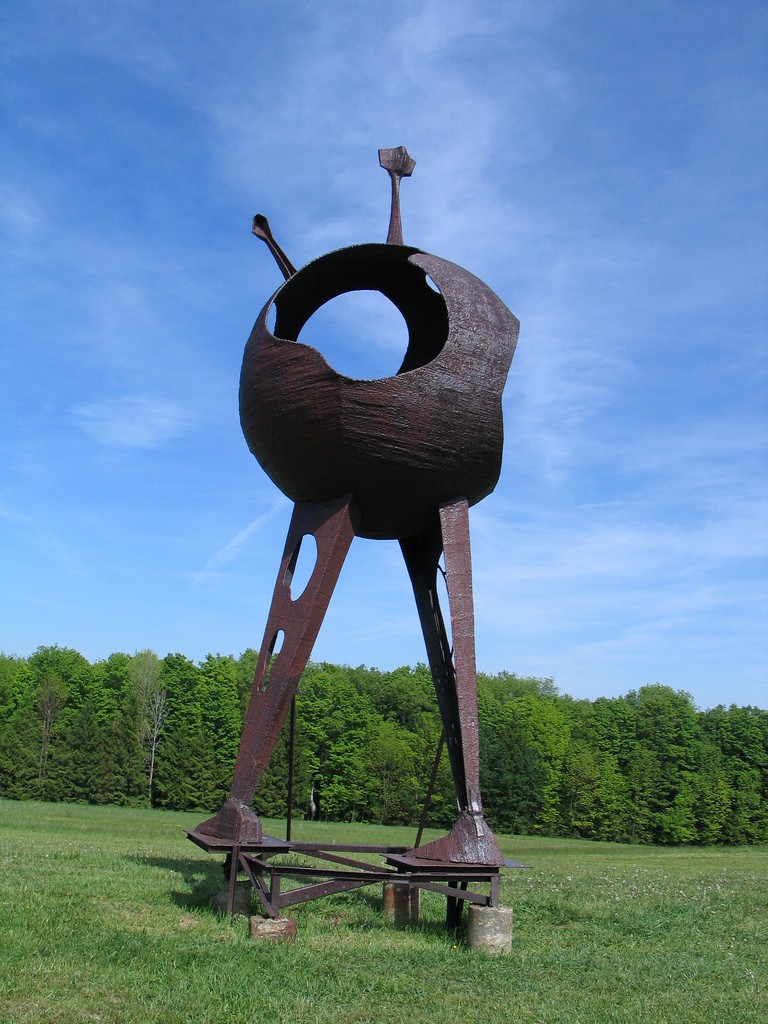Sculpture Parks: Where Art and Nature Collide
In a world where technology often dominates our lives, it’s refreshing to take a step back and immerse ourselves in the beauty of art and nature. Sculpture parks offer a unique experience that combines the creativity of sculptural masterpieces with the tranquility of outdoor environments. These remarkable spaces not only showcase stunning works of art but also provide an opportunity for visitors to connect with their surroundings on a deeper level.
What exactly is a sculpture park? Well, imagine acres upon acres of land transformed into an open-air museum, filled with captivating sculptures strategically placed amidst lush greenery or alongside serene bodies of water. These parks serve as platforms for artists to showcase their talent while allowing visitors to engage with these sculptures in an intimate and interactive way.
One such example is the Storm King Art Center in New Windsor, New York. Spanning over 500 acres, this sculpture park boasts an impressive collection of large-scale contemporary sculptures crafted by renowned artists such as Alexander Calder, Mark di Suvero, and Maya Lin. As you stroll through the expansive landscape dotted with towering pieces of art, you’ll feel both humbled by their grandeur and inspired by their artistic expression.
The beauty of sculpture parks lies not just in the artworks themselves but also in how they interact with their natural surroundings. Many parks are designed with careful consideration for environmental factors like light, wind patterns, and seasonal changes. This intentional integration allows sculptures to evolve alongside nature, creating a dynamic experience that shifts throughout the year.
For instance, at Yorkshire Sculpture Park in West Yorkshire, England, you’ll find yourself surrounded by rolling hills adorned with thought-provoking sculptures from various artists around the world. The changing seasons bring new colors and textures to both the landscape and the artwork itself – transforming each visit into a one-of-a-kind experience.
Beyond aesthetics alone, there’s something therapeutic about being immersed in nature while engaging with art. Sculpture parks provide a peaceful escape from the hustle and bustle of daily life, inviting visitors to slow down and reconnect with their senses. As you walk along winding paths or sit on benches strategically placed near sculptures, you’ll find yourself being drawn into a state of mindfulness – absorbing every detail and appreciating the intricacies of each artwork.
The deCordova Sculpture Park and Museum in Lincoln, Massachusetts is a prime example of how sculpture parks can evoke an emotional response within visitors. With over 30 acres of rolling hills dotted by more than 60 thought-provoking sculptures, this park offers an opportunity for introspection and contemplation. The seamless blend of art and nature creates a serene atmosphere that encourages self-reflection and personal growth.
But sculpture parks are not limited to large open spaces; they can also be found within urban landscapes. These oases amidst concrete jungles offer city dwellers a chance to escape the chaos while still appreciating artistic expression. Take, for instance, the Hakone Open-Air Museum in Hakone, Japan – nestled in the picturesque mountains just two hours away from Tokyo. This museum’s outdoor sculpture park features works by both Japanese and Western artists set against stunning natural backdrops such as cherry blossoms trees or bamboo groves.
Whether located in sprawling countryside or hidden gems within cities, sculpture parks serve as vital cultural hubs that promote accessibility to art. Unlike traditional museums where artworks may feel unapproachable behind glass barriers or velvet ropes, these open-air galleries allow visitors to engage with sculptures freely – touching them (when permitted), walking around them, even sitting beside them.
Moreover, many sculpture parks actively encourage audience participation through interactive installations or educational programs designed for all ages. These experiences foster deeper connections between viewers and artworks by allowing them to become active participants rather than passive observers.
One such example is Socrates Sculpture Park in Queens, New York City – an outdoor studio and exhibition space that provides artists with opportunities to create site-specific works. Visitors can witness the creative process firsthand, engage in workshops, or even participate in events like yoga classes held amidst the sculptures. This dynamic approach to art breaks down barriers and makes it accessible for everyone.
Sculpture parks go beyond merely displaying art; they also contribute to their surrounding communities by serving as gathering places for cultural events and social interactions. These parks often host festivals, concerts, and performances that bring people together in celebration of creativity.
The Ekebergparken Sculpture Park in Oslo, Norway is a prime example of how sculpture parks become integral parts of their cities’ cultural fabric. Set overlooking the fjord and city skyline, this park not only showcases magnificent sculptures but also hosts exhibitions, guided tours, and an array of public programs designed to engage visitors from all walks of life.
In conclusion, sculpture parks offer a unique blend of artistic expression and natural beauty – providing a gateway into worlds where creativity merges seamlessly with nature’s wonders. These open-air galleries invite us to slow down, connect with our surroundings on a deeper level, and appreciate the ingenuity behind each artwork. Whether you’re seeking tranquility amidst rolling hills or an urban retreat within a bustling metropolis – sculpture parks are waiting to inspire your senses while fostering connections between art enthusiasts from all walks of life.

Leave a comment